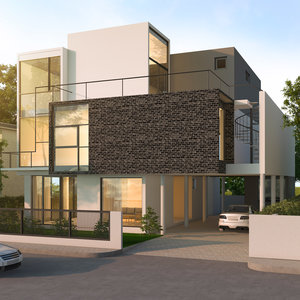In the contemporary landscape of rapidly advancing technology and evolving design principles, the synergy between technology and design has paved the way for innovative smart solutions that cater to the demands of modern living. This harmonious convergence has given rise to a plethora of transformative products and systems that seamlessly blend functionality with aesthetics, enhancing the overall quality of life for individuals and communities alike. From smart homes that effortlessly integrate appliances, lighting, security, and climate control through intuitive interfaces, to urban spaces reimagined for sustainability efficiency, the marriage of technology and design has yielded remarkable outcomes. One of the most notable outcomes of this synergy is the emergence of smart homes, where cutting-edge technologies are seamlessly integrated into the architecture and interior design. This integration not only enhances convenience but also promotes energy efficiency and security. Smart thermostats, for instance, adjust temperatures based on occupants’ preferences and presence, reducing energy wastage.

Lighting systems can be programmed to mimic natural light patterns, promoting well-being and comfort. These solutions not only respond to the needs of the occupants but also adapt to the surrounding environment, fostering a harmonious coexistence between human habitation and the natural world. Moreover, the infusion of technology and design has revolutionized urban planning and architecture, giving birth to the concept of smart cities. These cities leverage data-driven insights to optimize resource allocation, traffic flow, and public services. Seamless transportation systems, enabled by real-time data and connectivity, alleviate congestion and decrease carbon emissions. Public spaces are reimagined with the integration of renewable energy sources, green infrastructure, and smart waste management, creating healthier and more sustainable environments for residents. The aesthetics of smart cities are not sacrificed; instead, they are enhanced through the integration of interactive art installations, digital facades, and intelligent urban furniture, creating urban landscapes that captivate the senses and foster a sense of belonging.
However, with these remarkable advancements also come challenges that demand thoughtful consideration. Privacy concerns and data security issues arise as technology becomes increasingly embedded in our daily lives design. Striking a balance between convenience and safeguarding personal information requires innovative design approaches that prioritize user agency and transparency. Additionally, the digital divide presents a hurdle to achieving equitable access to these smart solutions. Ensuring that the benefits of technology and design synergy are accessible to all, regardless of socioeconomic status, calls for inclusive design principles and targeted policies. In conclusion, the symbiotic relationship between technology and design has ushered in a new era of intelligent solutions for modern living. The fusion of functionality and aesthetics in smart homes and cities has the potential to reshape our world, fostering efficiency, sustainability, well-being. As we navigate the complexities of this technological renaissance.
